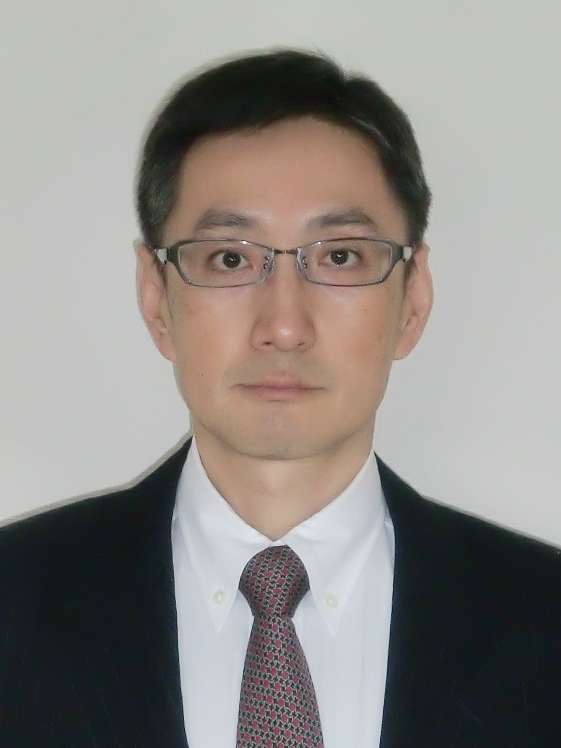
原山 卓久 教授
Takahisa Harayama
専門分野
非線形物理学
波動カオスとレーザー媒質と非エルミートフォトニクスの融合による非線形物理学
研究テーマ
古典力学系のカオス / 量子力学系のカオス/レーザーの非線形ダイナミクス
キーワード
カオス, 量子カオス, 波動カオス, レーザーカオス, 非線形ダイナミクス
LINKS
RESEARCH OVERVIEW
研究概要
カオスなどの非線形物理学では基礎的・一般的な数理的理論を確立することが重要です。しかし、そこにとどまらず、非線形物理学を現実世界に適用し、理論モデルが現実の複雑な世界をどの程度説明できるか、実験で測定できるものは何か、といったことを明らかにし、そこから理論研究の更なる課題と方向性を抽出することも大切です。そこで、本研究室では、非線形物理学をベースに数理的・理論的側面とそれとは真逆の応用的側面とから同時に見る視点により、様々な問題に現れるランダムネスと複雑性の起源と機能について分野横断的な研究を展開しています。
数理的な研究としては、古典力学系のカオス・量子カオス・波動カオスに関する基礎的な非線形物理学の理論研究を行っています。古典力学系のカオスの研究では、予測可能な運動と予測不可能な運動の混在する保存写像系の複雑な相空間構造を詳しく調べるという基礎研究や、運動法則が決定論的であってもカオスによってランダムウォークのような振る舞いが観測される決定論的拡散等、カオスを基礎にした新しい統計物理学の構築を行っています。このカオスとよばれる現象は軌道の不安定性を基にした概念であるため、軌道の存在しない量子力学の世界では現れません。しかし、量子現象はエネルギーが非常に大きくなると古典力学の記述に近付くはずであるという対応原理からは、古典力学のカオスの性質も量子現象に影響を及ぼすと考えられます。このような量子現象におけるカオスの顕在化を研究する学問分野が量子カオスです。また、特に量子力学的粒子の波動性に注目し、エネルギーが大きい極限、即ち、短波長極限における波動現象に対するカオスの効果として量子カオスを拡張した概念が波動カオスです。
このような理論研究を進める一方で、これらの理論的成果を非線形光学や固体物理、さらには新規デバイスに応用する研究も行っています。たとえば波動カオスに見られる複雑な共鳴波動関数がレーザーの発振状態として実現可能であることを理論的に解明し、実際に半導体レーザーなどの実験を提案し、実験研究者と協力して出射光の特性を観測しています。この実験結果から2次元的な形状の微小光共振器のレーザー発振パターンが光線カオスに由来することが明らかになります。これは、光線と波動の対応問題であり、開放型の量子エルゴード問題という深い基礎的問題の解明の必要性に繋がっています。このように、非線形物理学を現実世界に適用することで基礎的・理論的問題を浮かび上がらせることも非常に重要であると考えています。
ところで、レーザーは1次元の場合にも、出射光が反射して再びレーザーに入射する戻り光によって不安定化し、カオスを生じます。このレーザーカオスが非常に複雑な高次元カオスとなることを理論的に研究しています。戻り光レーザーカオスは、その変動が大変高速であることも特徴の一つです。この高速な不規則変化を用いると、毎秒ギガビット以上の超高速でランダムなビット列を生成することが可能になります。このように物理的に超高速で生成される乱数は、暗号など通信セキュリティにおいて重要な役割を果たします。そこで本研究室ではこのようなレーザーカオスを用いた超高速物理乱数生成をモノリシックな半導体光集積回路により実現する方法についても研究しています。そして実験研究者と協力して物理乱数生成実験を行っています。この実験から、レーザーカオスにおける量子ノイズのエントロピーソースとしての役割、小型化と高速性の関係等の理論的課題が明らかとなります。ここでもやはり応用に踏み込むことによって逆に基礎的・理論的問題を浮き彫りにしていることが、本研究室の研究スタイルの大きな特徴です。
MESSAGE to STUDENTS
学生へのメッセージ
複雑系に現れる不思議な非線形現象の謎を一緒に解明しましょう。
学歴・経歴
1988年 早稲田大学理工学部物理学科卒業
1993年 早稲田大学大学院理工学研究科博士課程修了 理学博士(早稲田大学)
1992年 早稲田大学理工学部・助手
1995年 国際電気通信基礎技術研究所・研究員
2009年 NTTコミュニケーション科学基礎研究所・研究員
2011年 東洋大学理工学部・教授
2014年 早稲田大学理工学術院・教授
所属学協会
- 日本物理学会

Takahisa Harayama
Professor
Field of study
Nonlinear Physics
Nonlinear physics : synergetic effects of wave chaos, non-Hermitian photonics and nonlinear laser dynamics
Research Themes
Chaos in classical dynamical systems / quantum and wave chaos / nonlinear laser dynamics
Keywords
Chaos, Quantum / Wave Chaos, non-Hermitian Physics, Nonlinear Dynamics
RESEARCH OVERVIEW
Laser dynamics has been studied mostly by using simple box and ring cavities where a light field can be decomposed into one-dimensional parts, and lasing modes are assumed to be a combination of simple eigenfunctions such as sine and plane (travelling) waves. Nonlineartiy due to the interaction among lasing modes through the active lasing medium is a key component of leading to attractive phenomena of laser dynamics.
Quantum/wave chaos has been studied often by using quantum billiards with chaotic eigenfunctions which do not interact with each other. Nonlinearity due to deformation of a circle or rectangle billiard table such as stadium shape which prevents separation of variables of a wave equation is essential for interesting phenomena of quantum/wave chaos.
It is important to note that both of the above two types of nonlinearities are contained together in a chaotic billiard laser. That is to say, wave chaos meets laser dynamics in a chaotic billiard laser. Therefore, one can expect that novel laser dynamical phenomena might be discovered as a result of nonlinear interaction among chaotic wave functions in chaotic billiard lasers. Below, two examples of our resent results of novel laser dynamical phenomena resulted from the synergistic effect of the deformation of the billiard shape and nonlinear dynamics of resonance modes such as mode competition and locking are introduced.
Nonlinear Laser Dynamics of a Non-Orthogonal Chiral Pair
When described by the wave picture, photonic devices are generally non-Hermitian systems, because of the coupling or leakage to an environment. In the presence of asymmetry in addition to non-Hermiticity, resonances appear in pairs, forming nearly-degenerate pairs called chiral pairs. The wave functions of a chiral pair are highly non-orthogonal to each other and exhibit emission chirality, that is, the imbalance between clockwise (CW) and counter-clockwise (CCW) propagating wave components. The appearance of chiral pairs is one of remarkable features of a non-Hermitian photonic system with asymmetry.
We found CW and CCW rotational travelling lasing modes are generated by locking of highly non-orthogonal resonance modes of a chiral pair in a partially-chaotic asymmetric billiard laser. From the view-point of laser dynamics, we elucidated that only the CW or CCW chiral mode becomes a stable lasing state at the exceptional point. It is interesting that the light intensities of CW and CCW lasing modes are same in spite of the fact that CW components are much less than CCW components in resonance modes of a chiral pair, but these initial conditions which converge to CW lasing modes are much less than those which converge to CCW lasing modes.
Self-Organized Optimization of Deep Nonlinear Scar Lasing Modes
When a periodic ray orbit is stable, there always exists a resonance mode that is strongly localized on the stable periodic ray orbit. Selective pumping has been used to lase a resonance mode associated with the stable periodic ray orbit by limitting the pumping region to the narrow area covering a short stable periodic ray orbit.
When a periodic ray orbit is unstable, basically, there exist no resonance modes being localized on the unstable periodic ray orbit. However, in the research field of quantum chaos, weak localization on a short unstable periodic orbit called a quantum scar that is a scar in a uniform distribution due to quantum ergodicity has been studied often by using quantum billiards. Scarring phenomena also have been found in optical billiards. However, scar modes are not always found in an arbitrary range of wave numbers.
By numerical simulation of a fully-chaotic billiard laser where all of periodic ray orbits are unstable, we found that with the selective pumping where the pumping region is limited to the narrow area covering a short unstable periodic ray orbit, the resonance wave functions cooperate to localize the light intensity of the stationary lasing state on the unstable periodic ray orbit in the self-organized manner that realizes an optimal intensity pattern for getting the external pumping energy efficiently. In spite of no sharp scars in cold cavity resonance modes, locking of the resonance modes enables strong localization on the short unstable periodic ray orbit. We call this localized stationary lasing mode a “deep nonlinear scar mode” in order to make it distinguished from a shallow linear scar mode of a cold cavity.
MESSAGE to STUDENTS
I am looking forward to unraveling the mysteries of nonlinear phenomena in complex systems with you.
Education and Career
1993 Ph.D. degree in physics from Waseda University, Tokyo, Japan.
1992-1995 Research Associate at Waseda University.
1995 ATR Optical and Radio Communications Research Laboratories.
1996-2004 ATR Adaptive Communications Research Laboratorites.
2004-2009 Head of department of nonlinear science at ATR Wave Engineering Research Laboratories.
2009-2011 Research Scientist at NTT Communication Science Laboratories.
2011-2014 full professor at Department of Mechanical Engineering of Toyo University.
Since 2014 full professor at Department of Applied Physics of Waseda University.
Professional Memberships
- Physical Society of Japan
